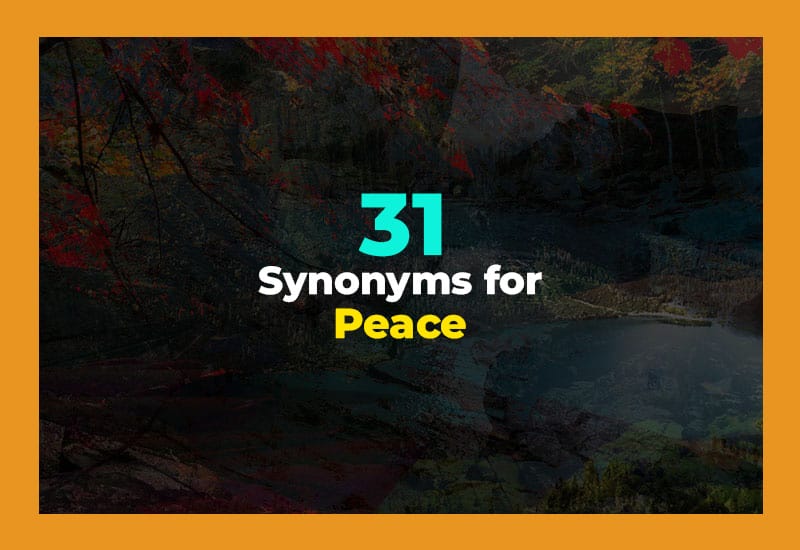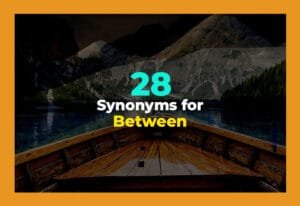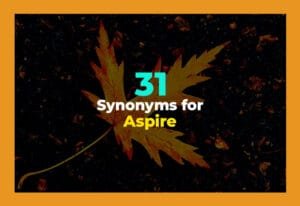You know those moments when everything feels calm and your heart feels light? That's peace. But peace isn't just one word—there are so many ways to express it! Whether it’s the quiet of a morning coffee or the joy of getting along with someone, you've felt it. Words like harmony, serenity, or stillness can paint a better picture depending on how you feel.
1. Calm
Calm means being free from stress, noise, or rush. It's a peaceful, relaxed feeling that can describe a person, place, or situation. For example, someone might say, "She stayed calm even during the argument." It's a great word to use when someone isn't upset or when a setting is quiet and still. You can feel calm at the beach, during meditation, or after a warm bath. It's one of the simplest and most relatable ways to describe peace, both on the outside and inside.
2. Tranquility
Tranquility means a deep state of peacefulness and quiet. It often refers to places or moods that help you relax and feel safe. For example, "I love the tranquility of the forest in the early morning." This word sounds a bit fancy, but it's a beautiful way to describe true calm. Tranquility can be felt during a walk in nature, at a calm lake, or just lying in bed listening to soft music. It's perfect when you want to say something feels deeply peaceful and still.
3. Harmony
Harmony means things working together smoothly without conflict. It can be about music, relationships, or situations. For example, "The team worked in perfect harmony to finish the project." This word is all about balance and agreement. When people live in harmony, they respect and understand one another. When music has harmony, it sounds pleasant and balanced. Harmony is a lovely way to express peace that comes from unity, cooperation, and kindness. Use it when you want to describe peaceful relationships or well-balanced teamwork.
4. Serenity
Serenity is a peaceful, calm state of being. It's the feeling you get when you are relaxed and not worried. For example, "She looked out at the ocean, filled with a sense of serenity." Serenity is a beautiful word that feels soft and gentle. It's often used in peaceful scenes or quiet moments of reflection. You might find serenity in nature, during meditation, or in a cozy room on a rainy day. It's perfect for describing calm that comes from deep within.
5. Stillness
Stillness means the complete absence of movement or sound. It can be very calming and peaceful. For example, "The stillness of the room made it the perfect place to read." This word describes a quiet moment when everything feels calm and motionless. It's often used in meditation, early mornings, or peaceful settings. Stillness helps people feel centered and focused. If you want to describe a very quiet, peaceful environment, "stillness" is the perfect word to use.
6. Silence
Silence is the lack of noise or sound. It can bring peace to your mind and surroundings. For example, "He enjoyed the silence after a long, noisy day." Silence can be comforting, especially when you need time to think or rest. It's the quiet that helps you hear your own thoughts. In a world full of sounds and distractions, silence can be a gift. Use it to describe a moment where no words are needed, and calm takes over.
7. Quiet
Quiet means very little noise or activity. It's another simple word for peace. For example, "The house was finally quiet after the kids went to bed." Quiet can describe a peaceful moment, a calm voice, or a gentle place. It's a word you hear often because we all need quiet sometimes. Whether you’re reading, thinking, or just relaxing, quiet moments are valuable. Use it to talk about peaceful surroundings or people who bring calm energy with them.
8. Order
Order means things are organized and working properly, often without chaos. It brings a sense of peace and control. For example, "The teacher brought order to the noisy classroom." When there is order, things run smoothly. It can describe a tidy room, a fair system, or even peaceful times in history. It's peace with structure and calm with direction. Order helps reduce stress and makes people feel safe. Use this word when talking about peaceful systems, habits, or environments.
9. Balance
Balance means things are equal, steady, and fair. It brings a peaceful feeling when nothing is out of place. For example, "He found a good balance between work and rest." When life is balanced, it feels more peaceful. Balance can be in emotions, time, diet, or relationships. It's not just standing on one leg—it's about living in a way that keeps everything steady. Use "balance" when describing peace that comes from not doing too much or too little of anything.
10. Amity
Amity means friendship and peaceful relations between people or groups. For example, "There was great amity between the two families." This word is often used in more formal settings, but it simply means everyone is getting along. Amity can exist between countries, communities, or individuals. It's about being kind, respectful, and open to cooperation. Use it when describing a relationship that is full of peace, respect, and understanding. It's peace in action, shown through friendly connections.
11. Restfulness
Restfulness means a peaceful feeling of relaxation. It's when your body and mind both feel at ease. For example, "The hotel room had a restfulness that helped me sleep right away." This word is great for describing a place or feeling that helps you unwind. It's perfect for vacation spots, quiet homes, or cozy corners. If something feels restful, it brings calm and comfort. Use "restfulness" when you want to show how peace helps you feel better and more refreshed.
12. Composure
Composure means staying calm and in control, especially in stressful moments. For example, "She kept her composure during the emergency." It's about inner peace and confidence even when things around you are chaotic. Composure helps you make smart choices and stay calm under pressure. Use it when talking about people who handle tough situations with grace. It's peace on the inside that shows on the outside, especially when things get hard.
13. Ease
Ease means freedom from worry, effort, or pain. For example, "He spoke with ease in front of the crowd." When things are done with ease, they feel natural and stress-free. It's a peaceful state that helps everything flow smoothly. Ease is what you feel when you're not tense or anxious. You can use it to describe how someone moves, talks, or lives. It's a gentle, kind form of peace that makes life feel better.
14. Pacification
Pacification means bringing peace to a situation that was once violent or tense. For example, "The leader worked hard on the pacification of the area." It's often used in political or historical contexts, but the idea is about calming down strong emotions or conflicts. Pacification is peace through effort—making peace happen even when it's tough. Use this word when describing actions that reduce fighting or anger and bring back calm.
15. Repose
Repose means a state of rest, peace, or sleep. For example, "He enjoyed a moment of repose after a long day." It's a calm, quiet break from activity. Repose can be physical, like lying down, or mental, like finding peace of mind. It's a peaceful pause that helps you feel better. This word is a gentle and poetic way to talk about stillness and rest. Use it when describing moments of complete calm or recovery.
16. Accord
Accord means agreement and harmony between people or groups. For example, "They signed a peace accord after months of talks." It's peace through understanding and cooperation. Accord is often used in politics, but you can also have accord with friends, family, or coworkers. It's a way of saying everyone is on the same page and working together peacefully. Use it when talking about peaceful decisions or shared goals that help keep things running smoothly.
17. Concord
Concord means a peaceful agreement or relationship. For example, "The two nations lived in concord for decades." It's a formal word that means no fighting, just harmony. Like accord, concord is about unity and peace, especially in relationships or groups. It shows that people or countries are working together instead of against each other. Use this word when you want to describe a deep, long-lasting kind of peace based on mutual respect and understanding.
18. Unity
Unity means being together and working as one. For example, "The team's unity helped them win the game." It's a form of peace that comes from being connected and supportive. Unity can happen in families, communities, or nations. When there's unity, there's less fighting and more teamwork. It's peace that's built on being together. Use "unity" to talk about the power of people standing together in harmony.
19. Friendship
Friendship means a bond between people who care for and support each other. For example, "Their friendship lasted through good times and bad." Friendship brings peace through trust, kindness, and understanding. It's one of the most personal and loving kinds of peace. When people are true friends, there's less conflict and more joy. Use "friendship" to describe peaceful relationships that make life better.
20. Understanding
Understanding means accepting others and seeing things from their point of view. For example, "She showed great understanding during the disagreement." It's a peaceful way to solve problems and connect with others. Understanding builds strong relationships and helps prevent fights. It's peace through empathy and care. Use it when describing someone who listens well and responds with kindness.
21. Nonviolence
Nonviolence means choosing not to hurt others, even in tough situations. For example, "He believed in nonviolence as the path to change." It's a peaceful way to solve problems without fighting. Nonviolence is strong because it takes courage to stay calm. It's been used in major movements around the world to bring about peace and justice. Use this word to talk about peaceful actions that make a big difference.
22. Truce
A truce is an agreement to stop fighting or arguing. For example, "The two kids called a truce and shared the toy." It's a break from conflict, even if it's just for a while. Truces can happen between countries or friends. They give everyone time to calm down and think clearly. Use "truce" when you want to describe peace made during or after a fight.
23. Armistice
Armistice means a formal agreement to stop a war. For example, "The armistice ended years of fighting." It's a big step toward lasting peace between countries. An armistice stops the weapons and opens the door for talking. It's a powerful word that shows how important peace can be. Use it when talking about historical events or efforts to stop major conflicts.
24. Settlement
Settlement means solving a problem peacefully. For example, "They reached a settlement in court without fighting." It's about agreeing on a solution instead of continuing a conflict. Settlements bring peace to legal, business, or personal problems. Use it when you want to show that peace was made through compromise or agreement.
25. Ceasefire
Ceasefire means a temporary stop to fighting, usually in war. For example, "The ceasefire gave time for peace talks." It's peace for a moment, often before something bigger and more permanent. Ceasefires help save lives and open the door to lasting peace. Use this word to talk about pauses in conflict.
26. Calmness
Calmness means being cool, quiet, and not upset. For example, "Her calmness helped everyone relax during the storm." It's peace in the way you act or feel. Calmness helps others feel safe, too. It's useful in hard times and quiet moments. Use this word when describing people or settings that feel relaxed and easygoing.
27. Peacefulness
Peacefulness means the quality of being peaceful. For example, "I love the peacefulness of the countryside." It's a calm and gentle feeling that brings comfort. Peacefulness can be seen in places, moments, or people. Use it when you want to show that something has the feeling of peace all around.
28. Equanimity
Equanimity means staying calm in stressful times. For example, "He faced the loss with great equanimity." It's inner peace that doesn't change when life gets tough. Equanimity helps you handle anything with grace. Use it when describing strength and calm during emotional or challenging times.
29. Contentment
Contentment means feeling happy and satisfied with what you have. For example, "She felt a deep contentment sitting with her family." It's a peaceful happiness that doesn't need more. Contentment brings a calm, steady kind of joy. Use it when talking about peace from being thankful and present.
30. Resolution
Resolution means solving a problem or conflict peacefully. For example, "The friends found a resolution and stopped arguing." It's peace through solutions and understanding. Resolution ends fights and builds trust. Use this word when talking about finding answers that make things better.
31. Stability
Stability means things are steady and not changing too quickly. For example, "The country enjoyed years of political stability." It's peace that lasts because it's strong and balanced. Use it to describe situations that feel safe, calm, and well-managed.

Final Thoughts
Peace comes in many shapes and words—calm, harmony, serenity, and more. Each word tells a different part of the peaceful picture. Whether you’re looking for quiet moments, friendly bonds, or a break from stress, the right word can make it easier to explain that feeling. Try using these synonyms in your daily life, writing, or conversations to share peaceful thoughts more clearly. Let's bring more peace into the world—one word at a time!









